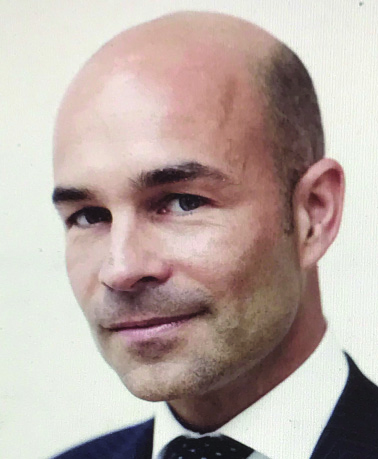 Desertec Industrial Initiative [Dii] Desert Energy was launched in 2009 as a market enabler for exploring the potential of renewables in the desert areas of the Middle East and North Africa (MENA) region. Its focus has been on improving the market conditions and examining the potential synergies resulting from a connected Europe and MENA energy market. In an exclusive interview with Renewable Watch, Cornelius Matthes, senior vice-president, Dii Desert Energy, talks about the organisation’s broader mission, the potential of renewable energy in MENA, and the recent tariffs for solar PV and concentrating solar power (CSP) projects in the region. Excerpts…
Desertec Industrial Initiative [Dii] Desert Energy was launched in 2009 as a market enabler for exploring the potential of renewables in the desert areas of the Middle East and North Africa (MENA) region. Its focus has been on improving the market conditions and examining the potential synergies resulting from a connected Europe and MENA energy market. In an exclusive interview with Renewable Watch, Cornelius Matthes, senior vice-president, Dii Desert Energy, talks about the organisation’s broader mission, the potential of renewable energy in MENA, and the recent tariffs for solar PV and concentrating solar power (CSP) projects in the region. Excerpts…
What is the scope of Dii Desert Energy? What are its key plans and targets?
Dii Desert Energy is a multi-stakeholder network, with its headquarters in the UAE. We also have teams in Germany, the UK and Spain. The mission is to help the energy market in MENA to become free of carbon emissions and to be able to export green energy competitively. Since its foundation in 2009, the organisation has shifted its focus from Desertec 1.0 (the export of power from deserts to Europe) to Desertec 3.0 (the export of hydrogen and other synthetic emission-free sources of energy apart from solar and wind to overseas energy markets). The focus is now on creating practical conditions for green electrons (power) and green molecules (hydrogen, ammonia) along the energy value chain, leading to tangible and profitable projects and other benefits for local and international stakeholders. Practically speaking, the organisation aims to connect the international players that are active in the MENA region with the right authorities and institutions.
What is MENA’s total renewable energy potential? What is the power capacity envisaged?
The Dii team has identified in the MENAT (Middle East, North Africa and Turkey) over 1,000 projects (hydro, wind, PV and CSP) with an individual capacity of more than 5 MWp and a cumulative capacity of over 32 GW. These projects are either operational or under construction. The big positive is that there is virtually no country without a national action plan on renewable energy. Moreover, the renewable energy targets are getting more ambitious. The current pace of development of renewable energy projects in MENA points to the enormous resource potential in the region. The countries in the region can ultimately become a powerhouse for clean energy and hydrogen, which could then be exported to energy markets across the world. Going forward, the region could build unlimited renewable energy capacity at costs that are competitive globally. Another positive development is that Europe is carefully looking at the possibility of importing clean energy in the future from the desert regions of MENA.
What are the key challenges being faced in the implementation of renewable energy projects in MENA?
The challenge for utility-scale renewable energy projects in the region is that at times policymakers are not consistent with the execution of procurement plans. The priorities keep changing over time for non-bankable contracts. Also, some countries in MENA still subsidise fossil fuels.
What will be the expected tariffs for renewables? How is the capital cost difference between PV and CSP going to reflect on the tariffs?
The tariffs in places with optimal solar and wind potential have come down to below $2 cents per kWh. The tariffs fell to $1.5 cents per kWh in the latest solar PV auction. So, it is only a matter of time before the tariffs plummet further below $1 cent per kWh. Even in countries with sub-investment grade rating, tariffs are currently around $2.5 cents per kWh. The fact is that this is far lower than the price of electricity generation through fossil fuels. It is expected that clean energy development over the next few years will further accelerate. For CSP, the situation is slightly more challenging due to relatively higher tariffs. However, the tariffs have come down dramatically over the past 10 years. The auction for the latest 700 MW CSP plant with 15 hours of full load thermal storage saw a record low tariff of $7.3 cents per kWh. This tariff will remain effective for a period of 35 years. In the given situation, even CSP, which can deliver baseload power, can comfortably compete with thermal power. Nonetheless, the cost of capital and the investment required per MW of installed capacity remains much lower for PV than CSP.
What are the key financing arrangements?
The MENA region is on the cusp of a major energy transition towards low-cost, reliable and emission-free energy. This transition would attract major investments in the coming decades. However, due to the falling costs of solar, wind, storage, and transmission, the investment requirements will be considerably lower as compared to those in the fossil fuel and nuclear power sectors. Going forward, the banking sector will gradually shift its attention and priorities to renewables.
